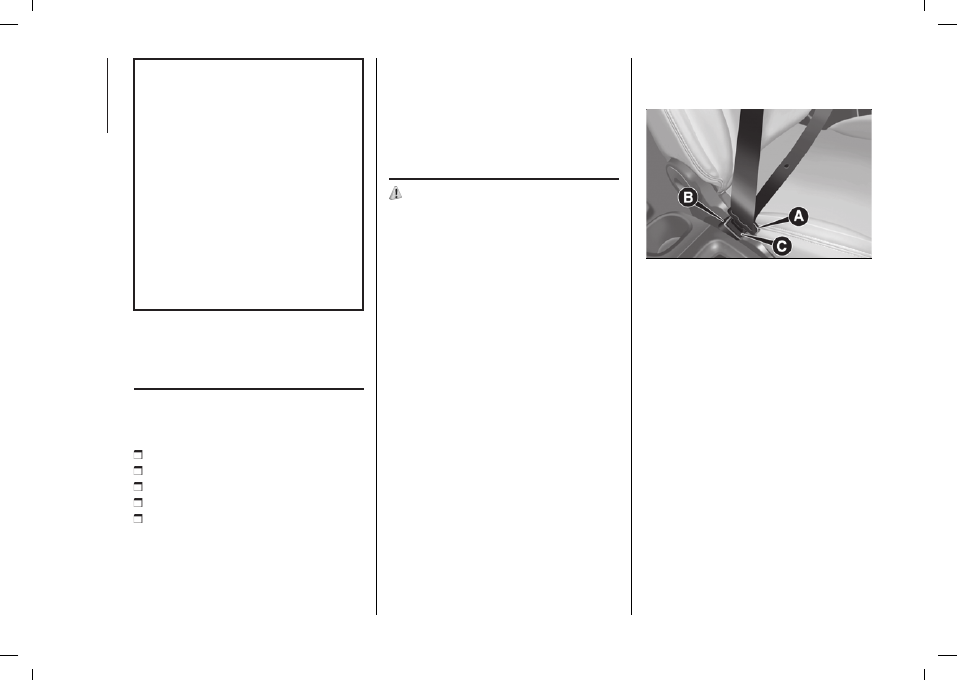Fiat 500L (2022 year). Manual in english - page 6

SAFETY
92
30)
If the system signals a loss of pressure
on a specific tyre, it is recommended to
check the pressure on all four tyres.
31)
The iTPMS does not relieve the driver
from the obligation to check the tyre
pressure every month; it is not even to be
considered a replacement system for
maintenance or a safety system.
32)
The iTPMS cannot indicate sudden
tyre pressure drops (for example when a
tyre bursts). In this case, stop the vehicle,
braking with caution and avoiding abrupt
steering.
33)
The iTPMS system only warns that the
tyre pressure is low: it cannot inflate them.
34)
Insufficient tyre inflation increases fuel
consumption, reduces the tread duration
and may affect the capacity to drive safely.
OCCUPANT
PROTECTION
SYSTEMS
Some of the most important safety
equipment of the car comprise the
following protection systems:
seat belts;
SBR (Seat Belt Reminder) system;
head restraints;
child restraint systems;
Front airbags and side bags.
Read the information given the
following pages with the utmost care.
It is of fundamental importance that
the protection systems are used in the
correct way to guarantee the maximum
possible safety level for the driver and
the passengers.
For the description of the head restraint
adjustment see the "Head restraints"
paragraph in the "Knowing your car"
chapter.
SEAT BELTS
63) 64)
All car seats are equipped with seat
belts with three anchorage points and a
retractor.
The reel mechanism operates locking
the belt in the event of sharp braking or
strong deceleration due to a collision.
This allows the seat belt strap to slide
freely and to adapt to the body of the
occupant.
In the event of an accident, the seat
belt will lock reducing the risk of impact
inside the passenger compartment and
of being projected outside the car.
The driver is responsible for respecting,
and ensuring that all the other
occupants of the vehicle also respect,
the local laws in force in relation to the
use of the seat belts.
Always fasten the seat belts before
setting off.
USING THE SEAT BELTS
The seat belt should be worn keeping
the chest straight and rested against
the backrest.
To fasten the seat belts, hold fastening
tongue (A) fig. 103 and insert it into
buckle (B), until it clicks into place.
103
F0Y0085C
On removal, if the belt jams, let it
rewind for a short stretch, then pull it
out again without jerking.
To unfasten the seat belts, press
button (C) and guide the seat belt
with your hand while it is rewinding, to
prevent it from twisting.
The retractor may lock when the car
is parked on a steep slope: this is
perfectly normal. Furthermore, the
reel mechanism locks the belt if it is
pulled sharply or in the event of sudden
braking, collisions and high-speed
bends.
Once seated, wear the rear seat belts
as shown in fig. 104 and fig. 105.
IMPORTANT When putting the rear
seat back in its normal position, after
folding, make sure that the seat belt